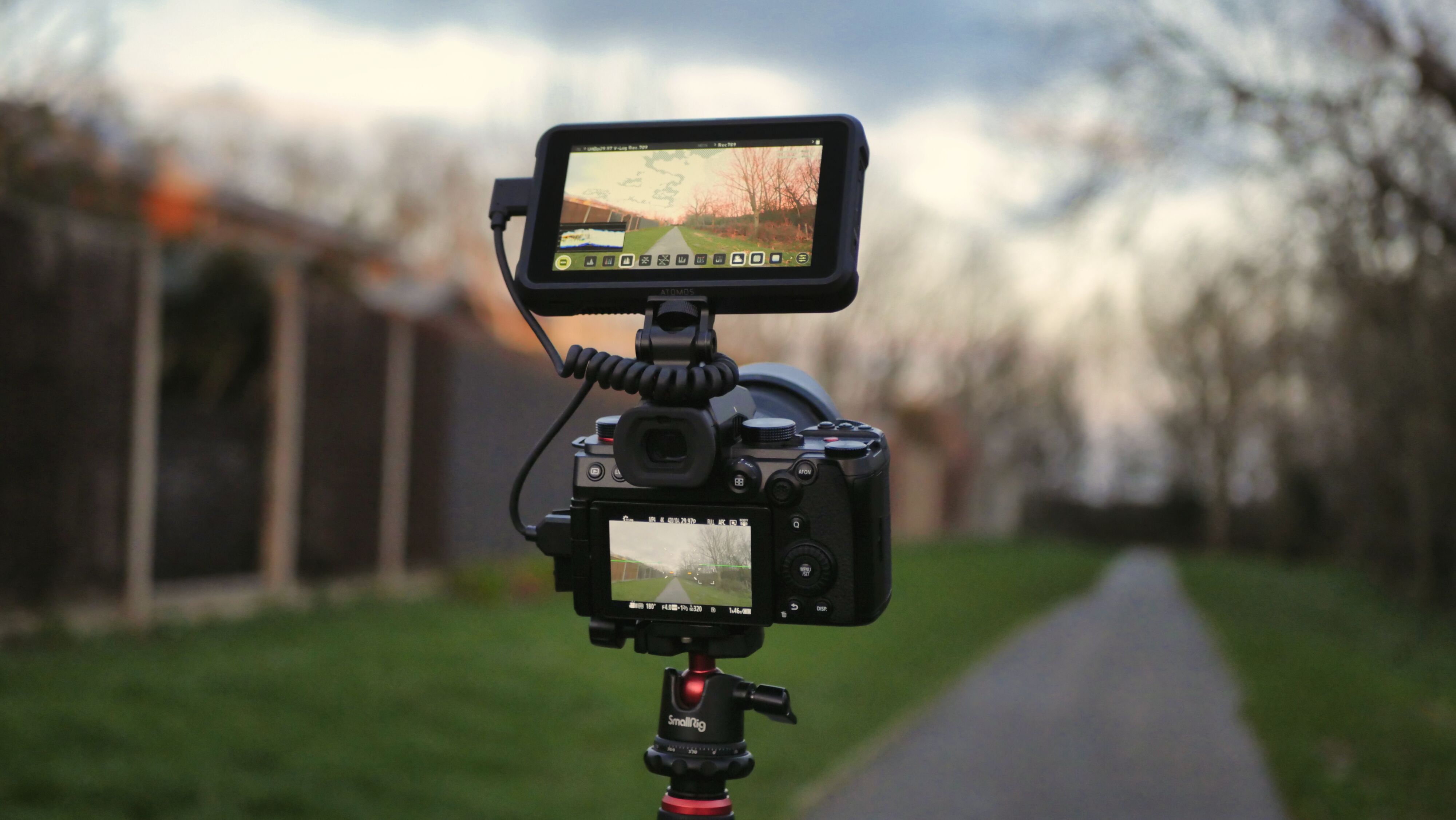
The Atomos Shinobi was initially released in 2019, and since its launch, it has cemented itself as one of the best on-camera monitors around. Atomos is known for its external recorders, like the Ninja, which doubles up as a monitor and an HDMI recording device, but the Shinobi is a little different. It comes at a more affordable price point, and it only functions as a monitor, with no recording capabilities.
It’s a feature-packed offering, with numerous tools to help you nail your focus and exposure, as well as camera-specific Log conversion and the ability to import custom LUTs. Otherwise, it essentially acts as a replacement for your camera’s built-in monitor, only larger, brighter, and more adaptable.
There are two versions of the Shinobi, one with a 7-inch screen, and one with a more compact 5-inch display. I have the smaller version in for testing, which suits me just fine, as it’s easier to take into the field. However, if you’re in a studio setting, or working with a crew, the 7-inch could be just what you need.
The Shinobi is pretty cheap, by professional video gear standards, but it has been undercut by a flood of budget options from brands like Feelworld, Portkeys, and Desview. I have more experience with these budget monitors, so I was excited to find out if there was a benefit to jumping to a more premium product. I’ve been shooting with it for the past week or so, and here’s what I found out.

Atomos Shinobi: Specifications
Atomos Shinobi: Price
The Atomos Shinobi 5 initially launched in 2019 at a price of $399 but in the time since, it has received a permanent price drop to just $299 / £329 / AU$499. The 7-inch version is a little more expensive at $599 / £699 / AU$999.
It’s available globally from most camera retailers, and of course, it’s on Amazon, too.
Atomos Shinobi: Design & Handling
Aesthetically, the Atomos Shinobi looks almost identical to the Ninja V, at least from the front. It’s very similar to the new Ninja, too, although that brownish paint job sets it apart a little more. The first major design difference is that the Shinobi is made from polycarbonate, rather than metal. It feels rugged enough, but it’s a touch less premium. On the other hand, it helps to keep the weight down, and when you’re shooting with a rigged out camera, that’s exactly what you need.
Around the back, things are a little more different. Since this isn’t a recorder, there’s no slot for an SSD, only a centrally placed Sony NPF battery slot and a power button. On the sides, you’ll find an HDMI input, a 3.5mm headphone socket, a remote port and an SD card slot. This SD card slot is just used for firmware updates and adding custom LUTs, before you get any fantasies about using it as a cheap recorder.
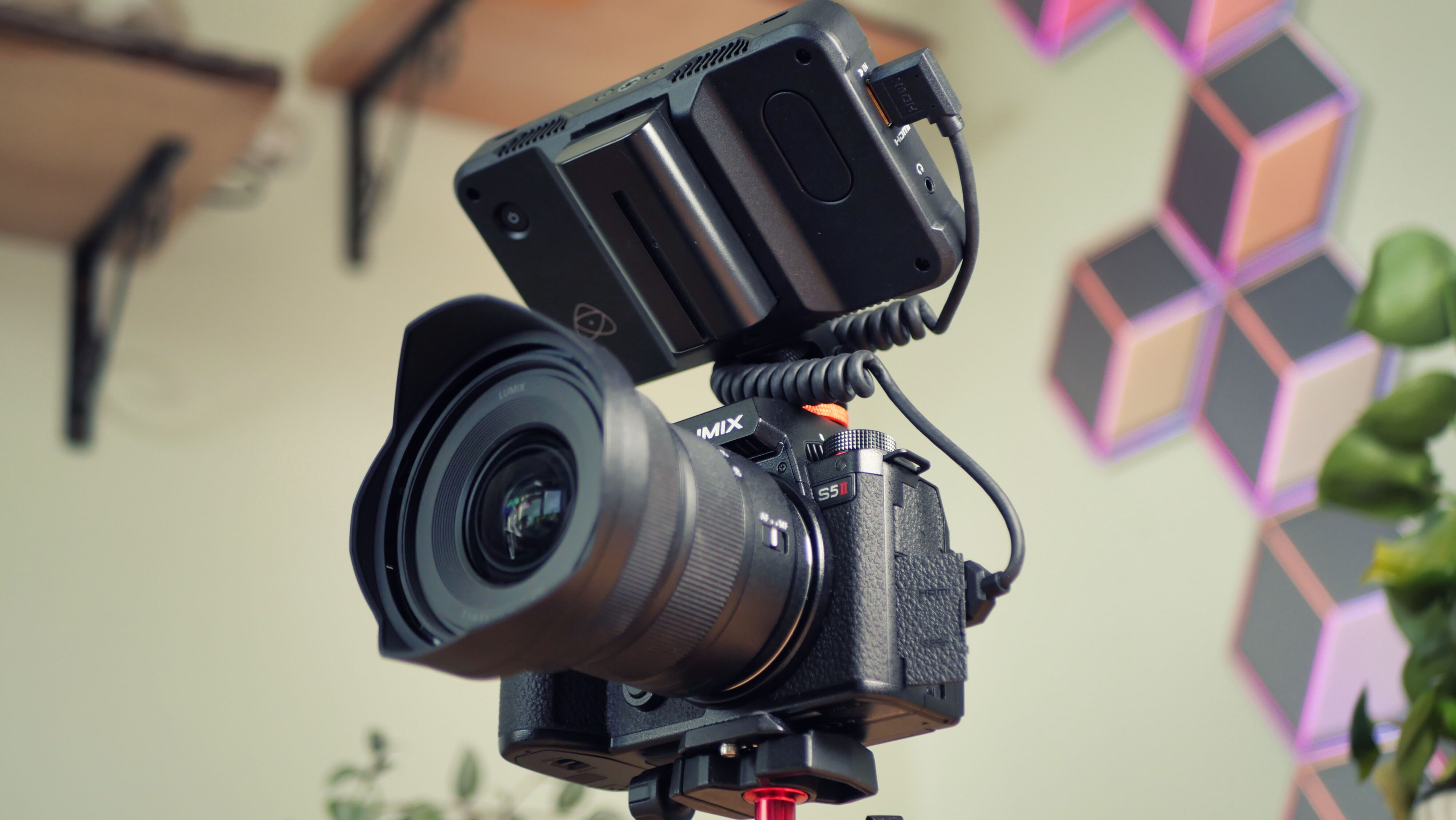
Unlike Atomos’ recorders, there’s no HDMI output here. This is fine for my needs, but it could cause issues if you want to use the monitor in a live broadcast setting, for example. I was pleased to see a headphone socket, though, as it means you can monitor audio on cameras that lack a 3.5mm jack.
There’s a ¼-inch tripod thread on the top and bottom of the monitor, and there’s no mounting solution provided in the box. All you get is the monitor itself and an AC power adapter with an NPF dummy battery. I was a little surprised to see this, as my cheap Portkeys PT5 II came with a cold shoe mount, sun hood and carrying case for about a third of the cost. Still, it’s no big deal, you can pick up a solid monitor mount from a brand like SmallRig for around $20.
If you happen to also own an Atomos Ninja, some accessories are cross-compatible, like the sun hood and mounts. Screen protectors work with either device, too, since the display is almost identical.
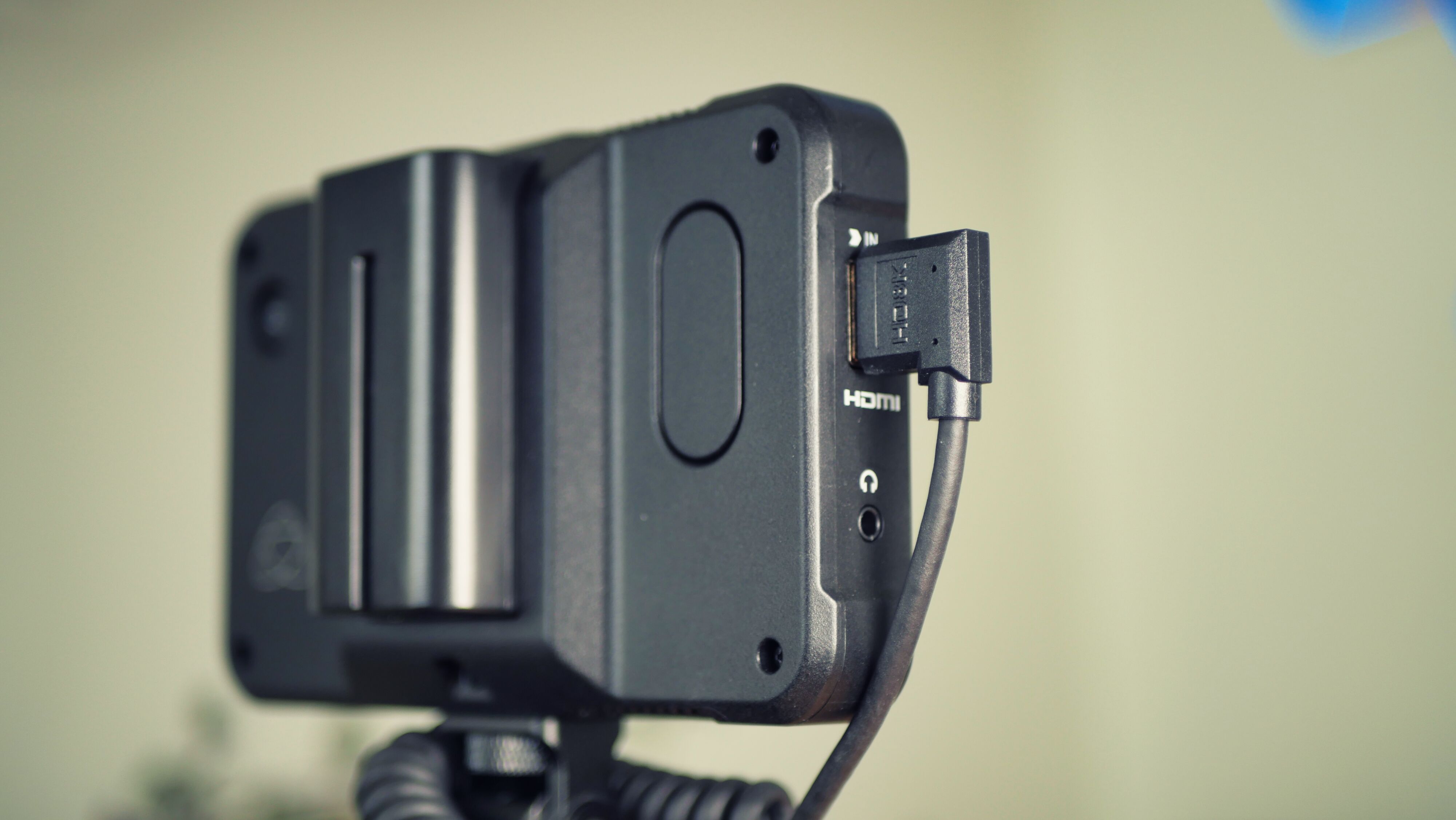
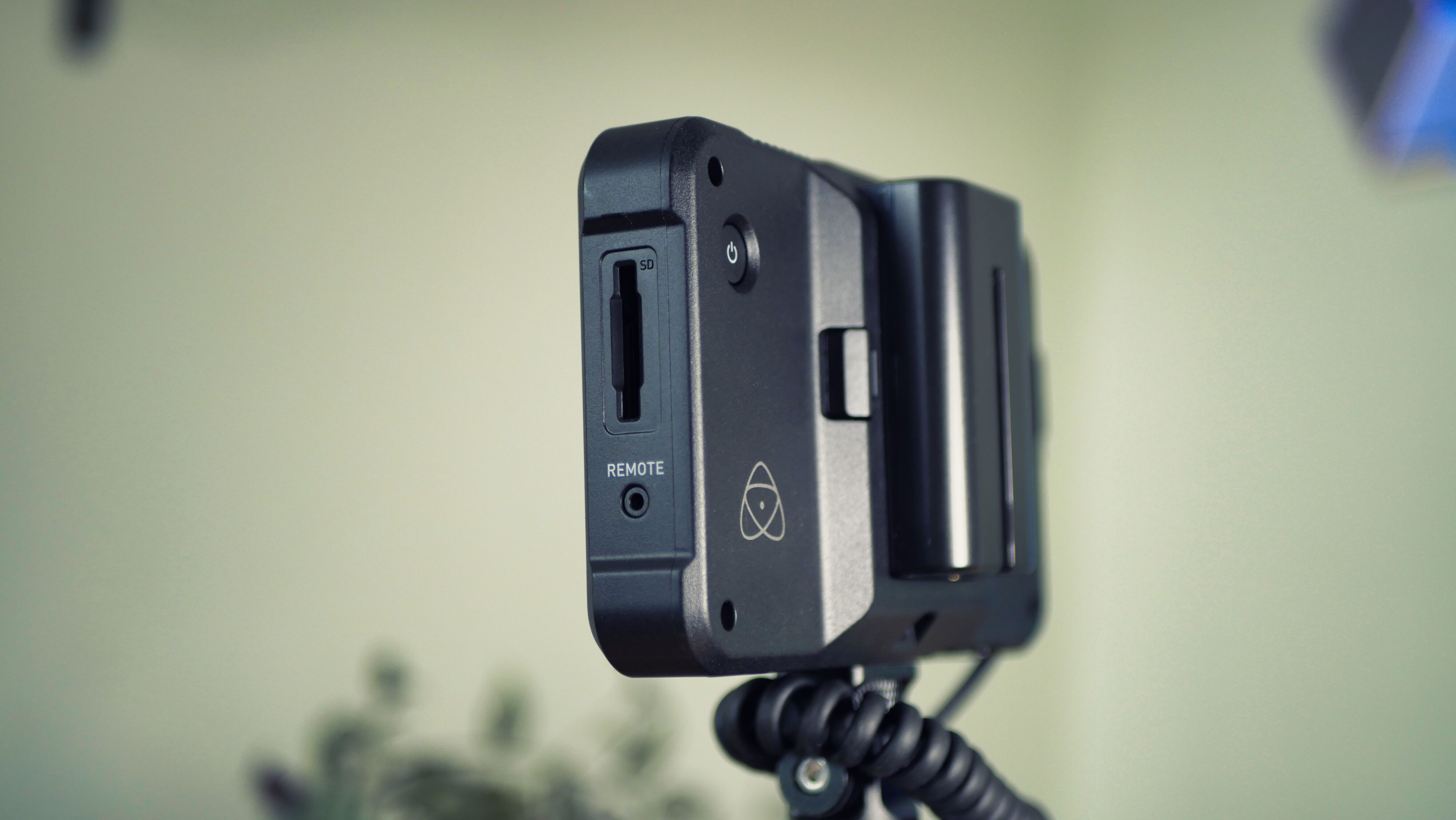
Atomos Shinobi: Performance
The first thing that struck me about the Atomos Shinobi is how bright it can get. It’s much brighter than than most built-in camera monitors, and that alone makes it much nicer to shoot with outdoors. The output is listed as 1000 nits, which doesn’t sound like that much, but it’s noticeably brighter than my Lumix S5II display, and that’s already one of the brighter panels that you’ll find on a mirrorless body.
It’s only a 1080p display, but at this size, that’s plenty of pixels to work with, and it always looks sharp. It’ll take up to a 4K30 input, but before you panic, this won’t stop you from recording at 4K60 or above, you’ll just be seeing a 30fps feed on the monitor itself. There’s a little bit of latency, as you’ll find with all HDMI monitors, but it’s very slight, and I had no trouble framing fast-moving subjects using the Shinobi.
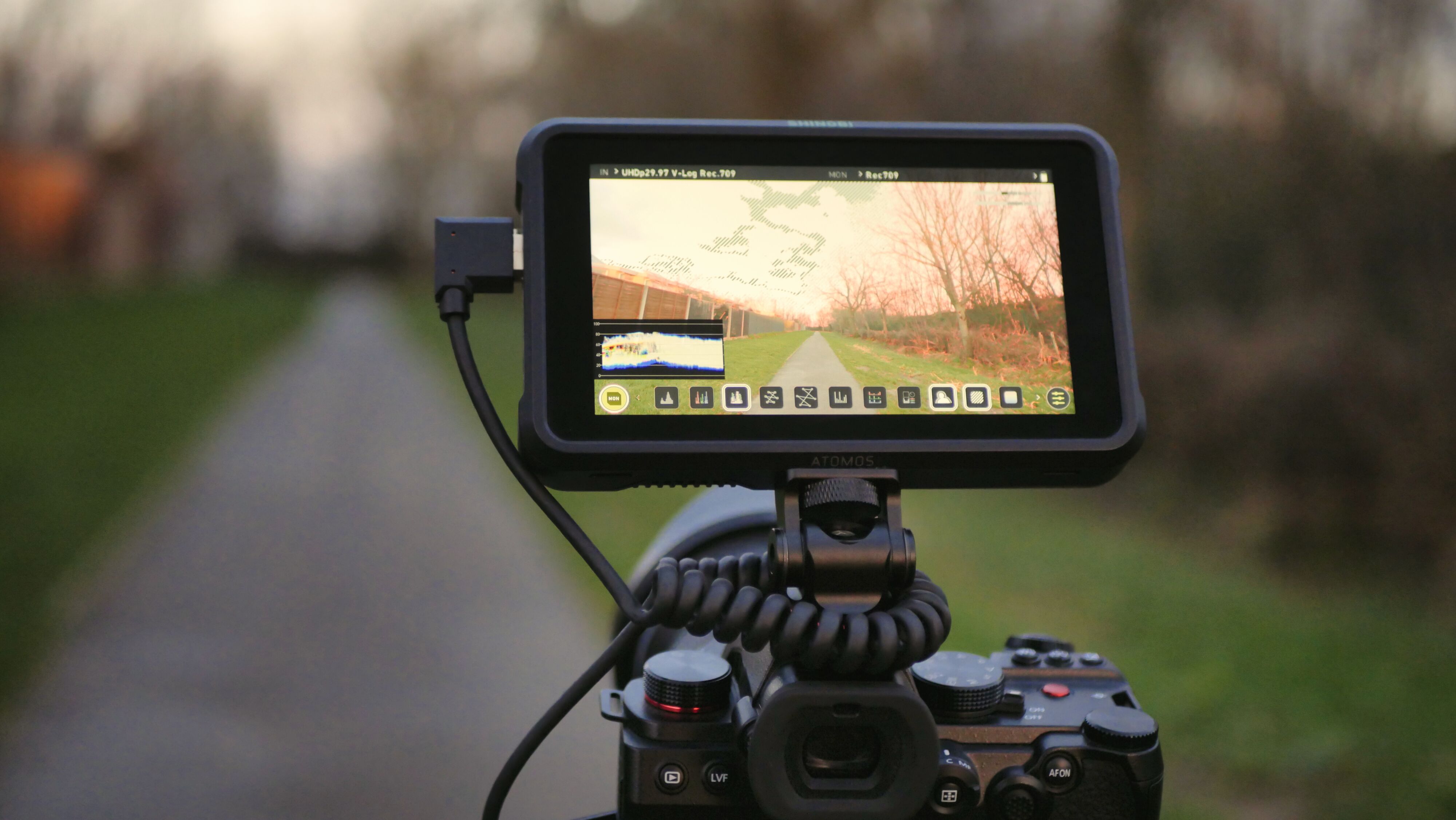
The monitor supports HDR, so if you’re filming in a HLG profile, it’ll display properly on the Shinobi. When the monitor originally launched, this was a pretty big selling point, as many cameras could shoot in HLG, but couldn’t display it properly on the built-in LCD. With newer camera bodies, that’s no longer an issue, but it’s still a nice feature, and it serves to set the Shinobi apart from some cheaper monitor options.
The Atomos Shinobi has a boatload of features to help you nail your exposure and focus. There’s everything from histograms to waveforms, vectorscopes, false colour, focus peaking and zebra stripes. Pretty much any tool you could need is built right in.
While it’s true that a lot of these tools are already present in high-end camera bodies, I don’t think I’ve ever seen as many options in one place. It’s also worth noting that not all cameras will output these scopes over HDMI. My Lumix S5II, for example, won’t allow me to do so. So, having these built into the monitor is essential.

One of my favourite features of the Atomos Shinobi is the library of built-in conversion LUTs. Most monitors will allow you to import custom LUTs, so that you can more easily monitor your LOG output, but I’ve never come across a monitor that offers so many conversions right out of the box.
You simply go into the menu, choose your camera brand and profile, and there’s a good chance the conversion LUT will be there ready to go. All the key consumer brands are accounted for including Sony, Canon, Fujifilm, Nikon and Panasonic plus there are professional options like Arri and Red. As mentioned, I was using the Lumix S5II and shooting in V-Log, and the built-in LUT worked perfectly.
I also loved working with the built-in frame guides. They’re especially useful now that so many clients require 9:16 vertical videos for social media. If you shoot with anamorphic lenses, there are plenty of de-squeeze options here, too. Unfortunately, I didn’t have the glass on hand to test this for myself.
Everything is accessed via the touchscreen interface, and it’s plenty responsive and easy to navigate. It’s not as smooth as a smartphone, but it’s good enough for the task at hand. There are no physical buttons, other than the power button, and that’s fine for the most part, but it’s something that should be considered if you’ll be shooting in cold environments and wearing gloves.
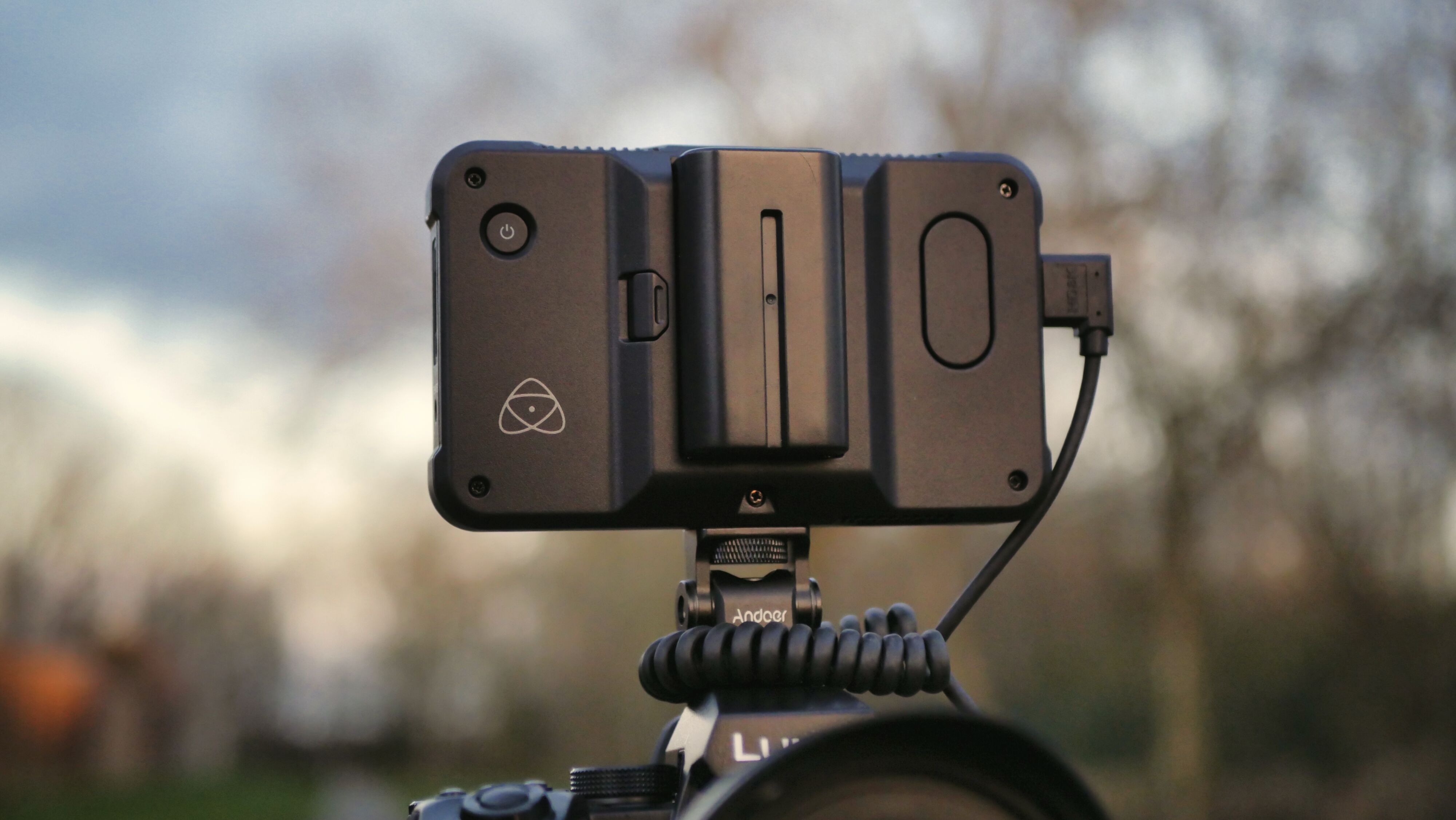
The Shinobi runs on Sony NPF-style batteries, as many on-camera monitors do. This means that your battery life will be determined by the size of the battery pack you choose to use. I tested using some very cheap off-brand NP-F550 batteries that I happened to have in my gear cupboard. Far from the ideal choice, but even with these, the Shinobi happily ran for hours on end. If you opt for a larger high-quality pack, like an NP-F970, you could easily shoot all day without swapping batteries.
One slight oddity, which is likely a result of my cheap batteries, is that the monitor kept turning itself on when the battery was installed. So I had to remember to remove the pack after shooting. Not the end of the world, but something I thought I should mention, nonetheless.
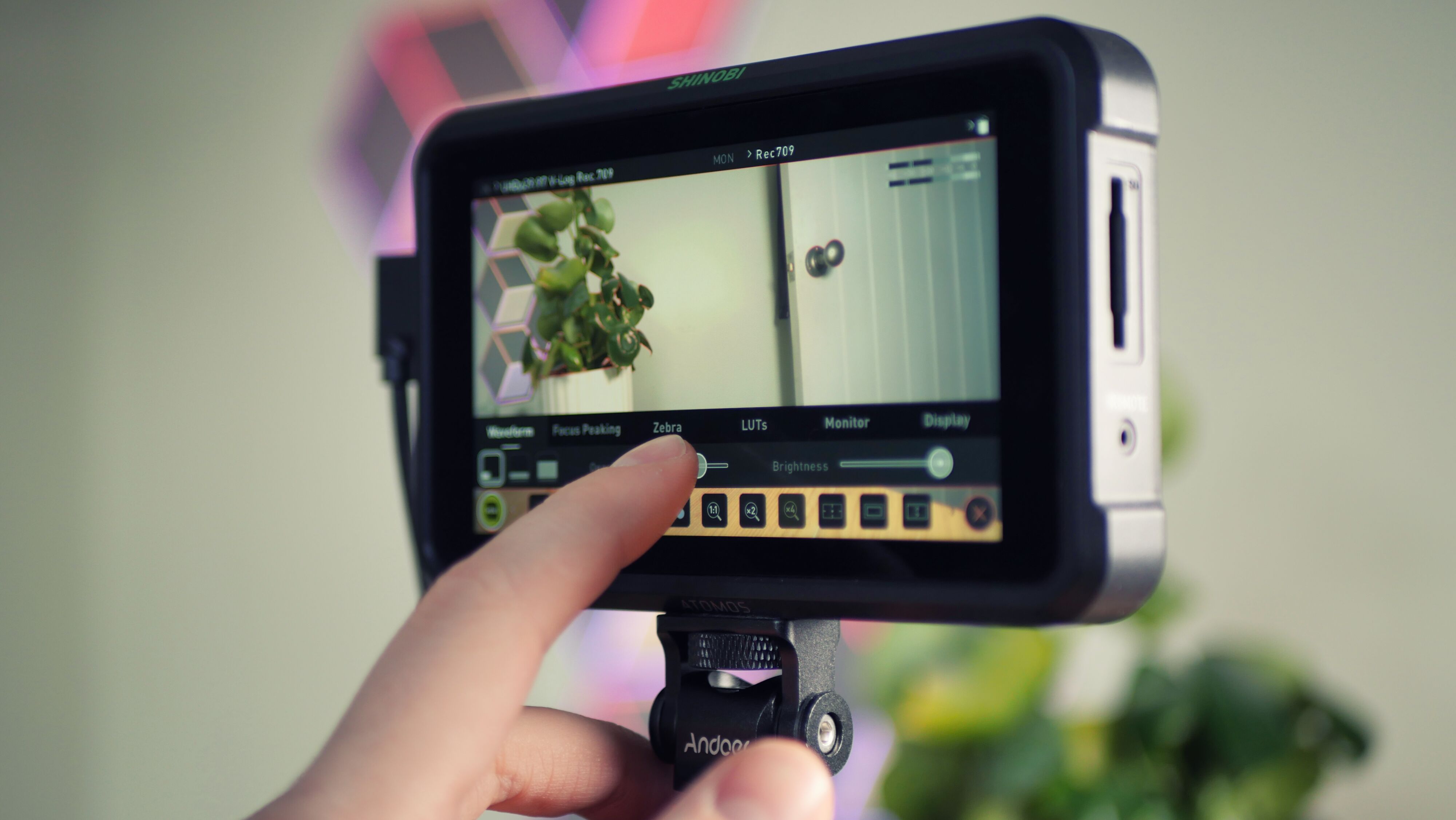
Atomos Shinobi: Verdict
If you’re looking for an on-camera monitor from a reputable manufacturer that won’t break the bank, the Atomos Shinobi is easy to recommend. It’s bright, well-made and has more scopes and tools than most people will ever need. It comes at a fraction of the cost of anything from a brand like SmallHD, but offers most of the same experience, so long as you don’t need an SDI input.
Of course, there are plenty of cheaper options that can do essentially the same thing. So if you’re looking to save some cash, that’s certainly possible, too. In that scenario, though, you can typically expect a worse user interface, and the reliability will come into question. For anyone working in a professional setting, I think it’s well worth the extra cost for the build quality, software and peace of mind that the Atomos logo brings with it.
